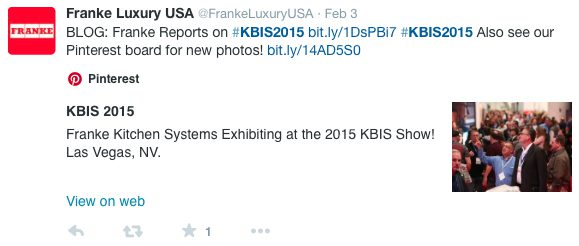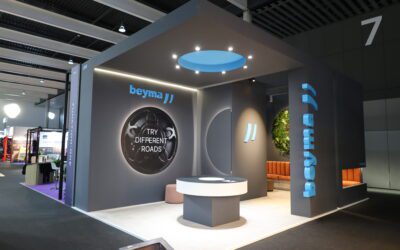Back in October, we explored how to make a pre-show game plan before exhibiting at a trade show. Now, we are going to speak about the post show checklist and how to qualify, measure and follow up on the leads acquired through the show. Setting clear expectations and goals for what you want out of the experience will help you evaluate your success after the event. Whether it’s the number and quality of generated leads or the overall impact of your presence and branding, define your metrics to keep your team focused and your investment worthwhile.
Taking the time to look objectively at each show and consistently share your results with management will demonstrate the value of your program and its impact on the company’s bottom line. You can do this by making a comprehensive post-show checklist that includes your strategy, results, budget, and plans for improvement.
The Post Show Checklist
Research the Lead Retrieval
Most companies’ primary reason for exhibiting is to gather sales leads, so the quantity and quality of the leads gathered is especially important to your executives since, ideally, this will generate sales and revenue for your company.
This may sound basic, but one of the first things successful trade show managers do once they get back to the office is to dig into the Lead Retreival. For some it is easier, as their customized lead retrieval system is built into an APP or a CRM system. For others that rely on the show management system, get to work on entering / cross checking them into your CRM system. Mark new opportunities as coming from the show you attended, link leads up to the right sales people, and when you are complete, ask that they quickly include any notes that they took. This way leads are documented, and tagged for an easy way to measure results.
Now, the sales people can get to work on following up with leads. Categorize these leads based on the type of prospect (individual buyer, dealer, or distributor, or past customer), decision making power, need for and interest in your product, time frame to buy, budget, and desire for follow-up after the show. All of these criteria contribute to your company’s ability to turn a lead into a sale.
Next, record and explain your lead follow-up process for each category of leads. What future follow-up is planned? How will you calculate and attribute sales to your participation at the trade show? Finally, talk with sales management and include hard numbers related to the bottom line.
Social Media
There is one crucial thing to remember- make sure you don’t lose the momentum. Impressions from the show may linger for a few days to a week but taper off quickly afterwards – so you want to tap into the buzz while it is still fresh. Hopefully before and during the show you were able to enhance your presence via social media by sharing content. Re-purpose your content right away- share pictures, videos, presentations, interviews, etc. onto Facebook, LinkedIn, and Twitter. Write a blog post right after the show discussing how things went.
You can measure your “social currency” in terms of likes, favorites, fans, followers, etc. Tweet things such as “can’t wait until next year’s event (with hashtag)” or “had lots of traffic at our booth.” If you had meetings you might want to send a quick tweet to those you met, “it was great to meet you @name at #show.” You can always thank the show organizers as well and add the show’s hashtag.
Press/Media Results
Identify the number of press representatives and analysts who attended your press events or met with your press liaison or executive management. Include the number of favorable press mentions you received within a specific time period after the show. If possible, include quotes or examples of the most prestigious coverage. According to the Public Relations Society of America, media coverage is more than twice as credible and conveys a higher influence on consumers than paid advertising. You can contact the publication to find out how much an ad of comparable size would cost, and multiply that amount by 2.5 to address the credibility factor of non-advertisement coverage. You can include that figure in your report as the total value of press coverage generated at the show.
Exhibit Effectiveness
In order to evaluate your trade show’s “success,” you need to look at more than just the numbers. Include a brief description and evaluation of your exhibit, including a photo and a statement on topics such as the following:
Exhibit Properties
What worked? What didn’t work?
Was the booth functional?
Was the booth in the right location?
How was the traffic flow?
How did visitors engage with your product?
Did your graphics draw attendees from both far away and right in front of your exhibit?
Was this the right trade show for my business?
Did I meet the right people?
What did I learn from others?
What did I learn about the competitors?
Consider other benefits of the show such as establishing your brand, community awareness, educating the public, and building new relationships and alliances with other companies. The ROI from a trade show is not necessarily immediate, so make sure to measure over time, and not just once. You can’t participate in every trade show that comes along. Therefore, it is imperative that you determine over the long run which trade shows give you the best performance that you can build your long-term business goals on.
Booth Staff
Make sure to always evaluate the effectiveness of your booth staff, so you can make improvements for the next show. Analyze details like:
Did you have the right amount of staff members in your booth?
Was the staff properly trained before the show?
Did the staff perform properly?
Any problems with the staff members?
Promotions and Exhibit Activities
Review the effectiveness of each of your pre-show, at-show, and post-show promotional programs and sponsorships. This analysis can be both quantitative, such as measuring the number of attendees who returned a pre-show mailer to your exhibit in exchange for a gift, and qualitative, such as feedback from press who attended an invitation-only press event in your exhibit to preview your new product. Describe the type, length, and number of demonstrations and/or presentations held in the exhibit, including the total number of attendees who participated.
Conclusion
The final step of the process is documentation. Include all of the above Post Show Checklist items together into an executive summary, which can then be easily shared. The goal is to get everyone on the team on the same page with the actual results of your Trade Show. Note the strengths and weaknesses, and be honest, because that will help justify budgets, and improve the overall effectiveness of your program.
Keeping a record of both qualitative and quantitative data post show will not only justify your investment in the exhibit, but also give you the opportunity to point out problem areas and address them so that your next show is even more successful.





